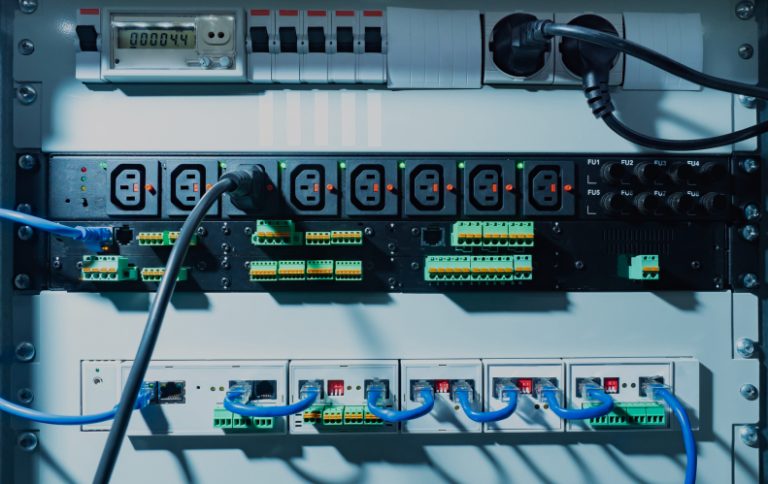In today’s fast-paced world of 5G, LTE, and IoT networks, the demand for high bandwidth and seamless connectivity is at an all-time high. However, managing signals from multiple carriers while minimizing interference and signal loss is a significant challenge. This is where RF combiners come into play.
An RF combiner allows multiple RF signals to be merged into a single output, enabling efficient bandwidth utilization and improving signal quality. When paired with high-quality coaxial cables, panel antennas, and omni antennas, RF combiners play a critical role in enhancing network performance and stability.
Let’s dive into how RF products, particularly RF combiners, are revolutionizing the telecom industry.

Understanding RF Connectors in High-Frequency Applications
An RF combiner is a passive device that merges multiple RF signals into a single output port while ensuring signal integrity and minimal interference. It is widely used in multi-carrier telecom networks to optimize bandwidth, enhance data transmission, and reduce signal distortion.
By effectively combining signals from different sources, such as panel antennas, omni antennas, and coaxial cables, RF combiners allow telecom providers to maximize spectrum usage and improve overall network performance.
How RF Combiners Work with Key RF Products for Optimal Performance?
| RF Product | Role in Network Performance |
| Coaxial Cable | Transmits signals with minimal loss and interference. |
| Panel Antenna | Provides directional signal transmission for targeted coverage. |
| Omni Antenna | Delivers 360-degree coverage for broad signal distribution. |
| RF Combiner | Merges signals from multiple sources and reduces interference. |
The Role of Coaxial Cables in Signal Transmission
High-quality coaxial cables are essential for preventing signal attenuation and maintaining impedance matching. When used with an RF combiner, they help reduce signal loss and improve transmission efficiency.
Enhancing Signal Strength with Panel Antennas
Panel antennas are designed for directional coverage, making them ideal for urban environments and long-distance transmissions. By pairing panel antennas with RF combiners, telecom providers can improve signal focus and boost bandwidth capacity.
Expanding Coverage with Omni Antennas
Omni antennas offer 360-degree signal distribution, making them perfect for dense, high-traffic areas like stadiums or public Wi-Fi zones. When integrated with RF combiners, omni antennas help maximize coverage while reducing interference.
How RF Combiners Boost Network Performance?
Reducing Signal Interference
In multi-carrier telecom networks, signal interference is a major challenge that can degrade signal quality and affect data transmission speed. An RF combiner plays a critical role in filtering out unwanted noise and cross-talk, ensuring that signals from different frequency bands do not overlap or interfere with each other.
By isolating signals and minimizing reflection, RF combiners maintain clean and stable signal transmission, which is essential for 5G infrastructure, broadcasting systems, and satellite communications.
Improving Bandwidth Efficiency
RF combiners allow multiple signals to share the same transmission path, enabling efficient use of available bandwidth. This is particularly important in densely populated urban areas, where multiple carriers operate simultaneously on different frequency bands.
By merging signals and managing power distribution, RF combiners help increase data transfer rates, reduce latency, and enhance overall network stability. This capability is essential for supporting high-speed data transmission in 5G networks and enhancing the performance of IoT devices.
Supporting High-Capacity Networks
In high-capacity networks, such as telecom base stations, broadcast towers, and satellite communication systems, RF combiners are essential for handling multiple frequency bands and power levels simultaneously. They allow operators to consolidate signals from multiple antennas, such as panel antennas and omni antennas, without compromising signal quality or strength. This capability not only improves coverage and capacity but also reduces infrastructure costs by minimizing the need for additional transmission lines and equipment.
By leveraging RF combiners, telecom providers can achieve seamless communication, improved data speeds, and reduced interference, ultimately enhancing the user experience and network efficiency
Overcoming RF Combiner Deployment Challenges
Deploying an RF combiner in multi-carrier telecom networks comes with its own set of technical challenges, such as signal loss, power handling limitations, and frequency mismatches. Addressing these issues is essential to ensure optimal performance, reduced interference, and enhanced bandwidth efficiency.
| Challenge | Solution |
| Signal loss and attenuation | Use high-quality coaxial cables and match impedance. |
| Power handling limitations | Implement RF shielding and heat management systems. |
| Frequency mismatch | Choose the right RF combiner for the frequency band. |
Real-World Applications of RF Combiners
5G Base Stations – Enhances Signal Strength and Improves Bandwidth
In 5G networks, RF combiners are essential for merging signals from multiple antennas and frequency bands, allowing for higher data transmission rates and lower latency. By combining signals from panel antennas and omni antennas, RF combiners help optimize bandwidth usage, reduce signal interference, and improve network stability. This is especially important in urban environments, where multiple carriers operate on different frequency bands.
Broadcast Systems – Reduces Interference in Radio and Television Signals
In radio and television broadcasting, RF combiners enable multiple signal sources to be transmitted through a single antenna system. This reduces the need for additional infrastructure, lowers operational costs, and minimizes signal interference. By effectively managing power distribution and isolating signals, RF combiners help broadcasters deliver clearer audio and video signals to audiences while avoiding cross-talk and noise interference.
Satellite Communications – Merges Signals for Efficient Uplink and Downlink
In satellite communication systems, RF combiners play a crucial role in merging signals from different transmitters for uplink transmission and separating signals from multiple channels during downlink reception. This allows satellite ground stations to handle multiple frequency bands simultaneously, ensuring efficient data transmission and minimal signal loss. RF combiners also help in maintaining signal integrity over long distances, which is vital for global communication and navigation systems.
Public Safety Networks – Provides Seamless Communication During Emergencies
In emergency response systems, such as police, fire, and rescue communications, RF combiners are used to integrate signals from different radio frequencies into a single communication channel. This ensures reliable and continuous communication between first responders, even in challenging environments. By reducing signal interference and boosting coverage, RF combiners enhance coordination and response times, which is critical during disasters and emergency situations.
Best Practices for RF Combiner Installation and Maintenance
During Installation
Proper alignment with coaxial cables to reduce signal loss.
Ensuring compatibility with panel and omni antennas for optimal performance.
Ongoing Maintenance
Regular inspections for wear, corrosion, and loose connections.
Monitoring for signal strength and interference issues.
In multi-carrier telecom networks, RF combiners play a crucial role in enhancing bandwidth and reducing interference. By integrating high-quality RF products, such as coaxial cables, panel antennas, and omni antennas, telecom providers can achieve seamless connectivity and improved signal quality.
Looking to elevate your network performance with cutting-edge RF combiners? Petracarbon has the expertise and products you need. Contact Petracarbon today for tailored solutions that reduce interference and maximize bandwidth.



